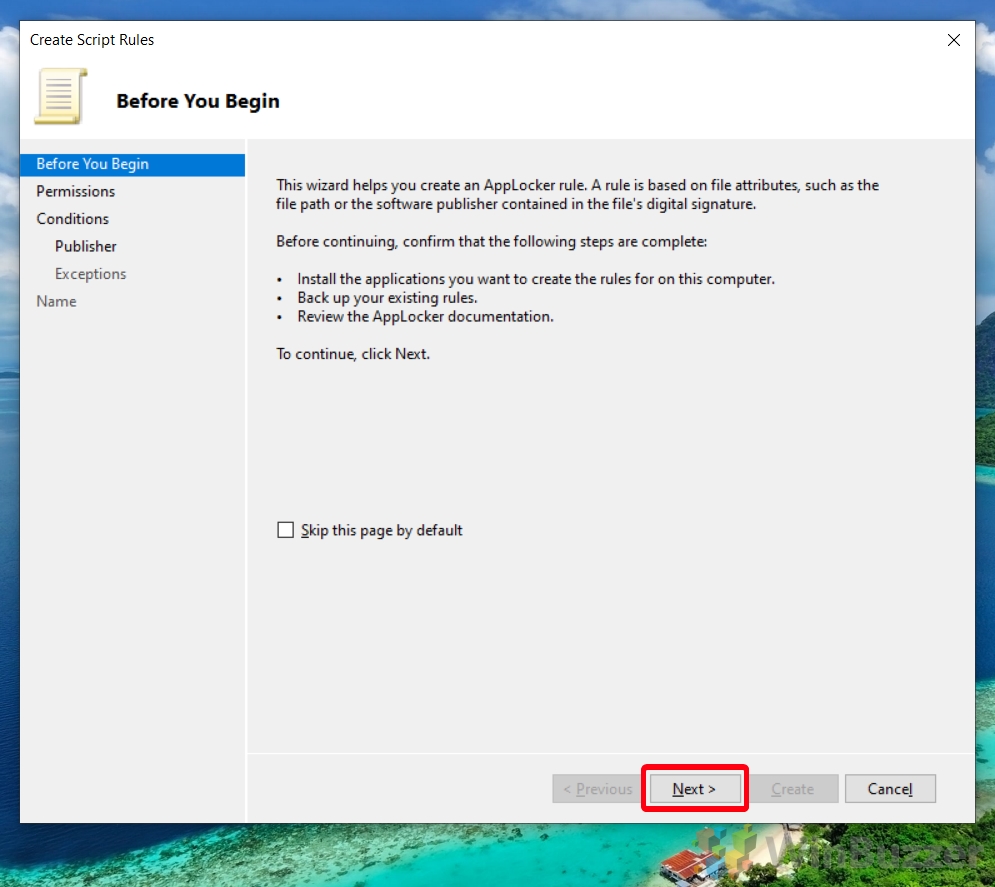
- #ENABLE APPLOCKER WINDOWS 10 HOW TO#
- #ENABLE APPLOCKER WINDOWS 10 WINDOWS 10#
- #ENABLE APPLOCKER WINDOWS 10 SOFTWARE#
Even in a cloud-only scenario with Azure AD joined clients you can still use the latter to build the policy. Configuration in Intuneįirst export your AppLocker configuration from either the Group Policy Management Console in Active Directory or from your local GPEdit Console. I will focus on how you can shift it to Intune for deployment and Microsoft Defender ATP’s Advanced Hunting capabilities for monitoring and policy refinement. In this post I assume that you are already some kind of familiar with AppLocker.

#ENABLE APPLOCKER WINDOWS 10 WINDOWS 10#
It is one of my recommendations for a secure Windows 10 baseline.
#ENABLE APPLOCKER WINDOWS 10 SOFTWARE#
Although it is not the best solution from a technical point of view (there’s Windows Defender Application Control including TPM-enforced policy signing) it is still a good way to build a quick solution to stop users from installing software or executing unwanted applications. The new path will be %SystemDrive%\ORACLE\INSTANTCLIENT\ this post I will give you a quick overview about cloud configuration of AppLocker using Intune and MDATP.ĪppLocker has been with us for quite some time now reaching back all the way to good old Windows 7. In the right pane, click Filter Current Log… and under Event Level only select Error and click OK.įor each blocked dll error found, add a relevant line to the PSMConfigureAppLocker.xml under AllowedApplications in the dll section.Ĭonvert the AppLocker path into an absolute path based on the Microsoft documentation.įor example, if the AppLocker path is %OSDRIVE%\ORACLE\INSTANTCLIENT\OCI.DLL, replace %OSDRIVE% with %SystemDrive%, a Windows environment variable. In the left pane, right-click EXE and DLL and click refresh. Go back to Applications and Services Logs\Microsoft\Windows\Applocker\EXE and DLL. Initiate a connection with the relevant connection through the PVWA. Select Save and clear to back up the logged events. In the left page, right-click EXE and DLL and select clear log…. Go to Applications and Services Logs\Microsoft\Windows\Applocker\EXE and DLL. If the connector is still blocked, do the following: If a connector fails, run the executable related to this connector and rerun the AppLocker script. If your environment includes executables that must be allowed, in addition to those that are built-in to the PSM installation, such as PSM Universal Connectors executables, you must edit this file to add rules that will allow these executables.

The PSM installation includes an AppLocker script which enables PSM users to invoke internal PSM applications, mandatory Windows applications, and third- party external applications that are used as clients in the PSM.Īll AppLocker rules are defined in the PSMConfigureAppLocker.xml file in the PSM installation folder > Hardening. These rules specify which users or groups can run those applications.

To do this, the PSM uses the Windows AppLocker feature, which defines a set of rules that allow or deny applications from running on the PSM machine, based on unique file identities. To create a hardened and secure PSM environment, the system must limit the applications that can be launched during a PSM session. Use this reference when you run the AppLocker script manually.

#ENABLE APPLOCKER WINDOWS 10 HOW TO#
This section describes how to configure the AppLocker policy by editing PSMConfigureAppLocker.xml file.


 0 kommentar(er)
0 kommentar(er)
